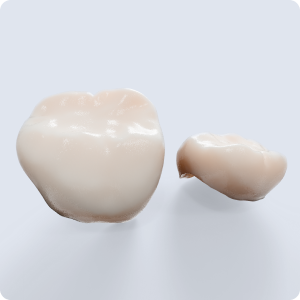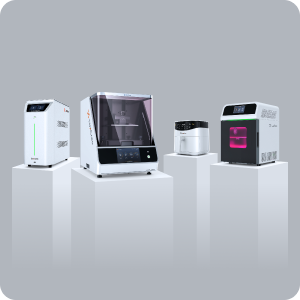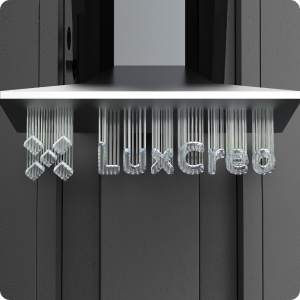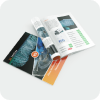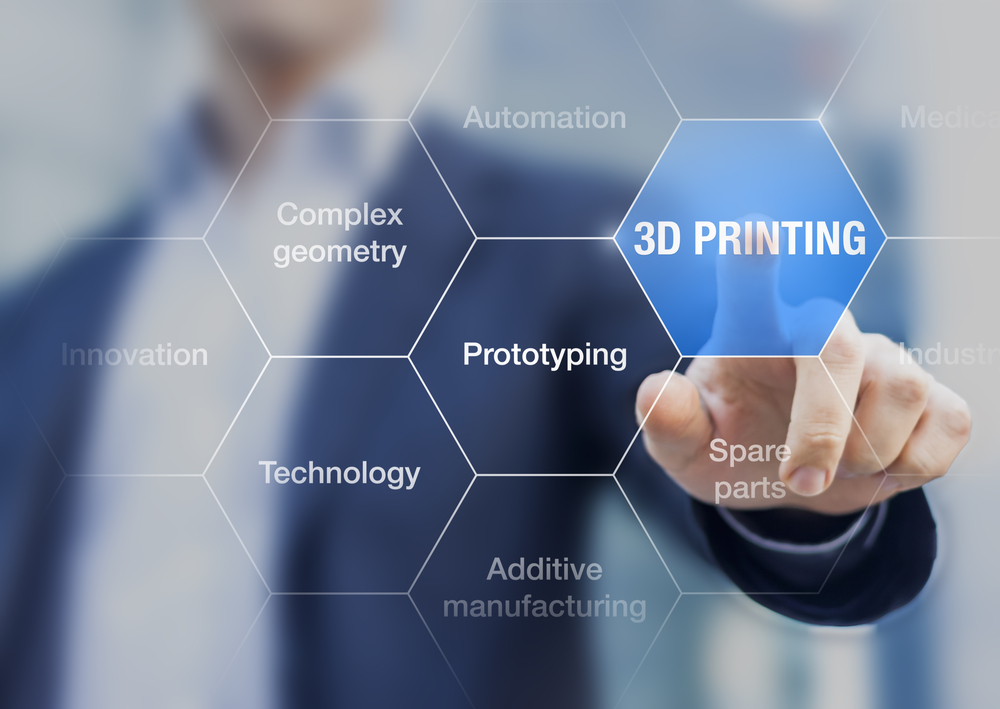
Four Applications of Rapid Prototyping with 3D Printing
Making the jump from a new product idea to a finished design is challenging because it requires adapting a product for traditional high-volume manufacturing processes. New designs often need multiple prototyping cycles and additional redesign iterations to enable high-volume production. Rapid prototyping uses 3D printing solutions to speed up the prototyping phase and ease the transition from prototyping to high-volume production.
3D printing has many rapid prototyping applications, allowing companies to accomplish more in less time without sacrificing product quality. Today’s 3D printing systems require no tooling and support a broad range of materials, so designers can enable rapid functional prototyping and make faster transitions to full-scale manufacturing.

What is Rapid Prototyping?
Rapid prototyping involves quickly fabricating a full-scale model of a product for testing and validation. By expeditiously redesigning, producing, testing, and evaluating a prototype, teams go through many cycles in a short amount of time and increase the chances of success for the finalized design.
3D printing is becoming the mainstream method for rapid prototyping for a range of different industries:
- Aerospace: 3D printing can produce more complex parts, simplifying mechanical assemblies (like engine parts) with part consolidation.
- Footwear: With greater design freedom, 3D printing opens up design possibilities with unique materials and structures that are not possible with traditional processes.
- Medical and Dental: Applications of rapid prototyping include implants, wearable devices, and surgical instruments, transforming the industry with same-day service.
Four Applications of Rapid Prototyping with 3D Printing
With the versatility of 3D printing systems and elimination of tooling, rapid prototyping can support a wide range of products and designs. Here are four critical applications of rapid prototyping that can help companies decrease design risks and go to market faster:
#1 Unique Functional Designs
3D printing does not require tooling, so designers can use it to experiment with various designs. Different materials can also be evaluated in rapid prototyping iterations, as the production-grade printing materials can affect both aesthetics and functionality. With 3D printing, a company seamlessly produces a functional prototype with the same production material and process. Designers can test multiple functional prototypes, and there is no need to modify a finished design before high volume production—unlike in traditional manufacturing.
#2 Unique Aesthetic Designs
In addition to unique functional designs, companies use 3D printing to experiment with unique aesthetic designs. Today’s printers deposit advanced 3D printing materials with various colors, form factors, and structures. Some aesthetic designs are also functional, intending to consolidate parts and reduce assembly costs.
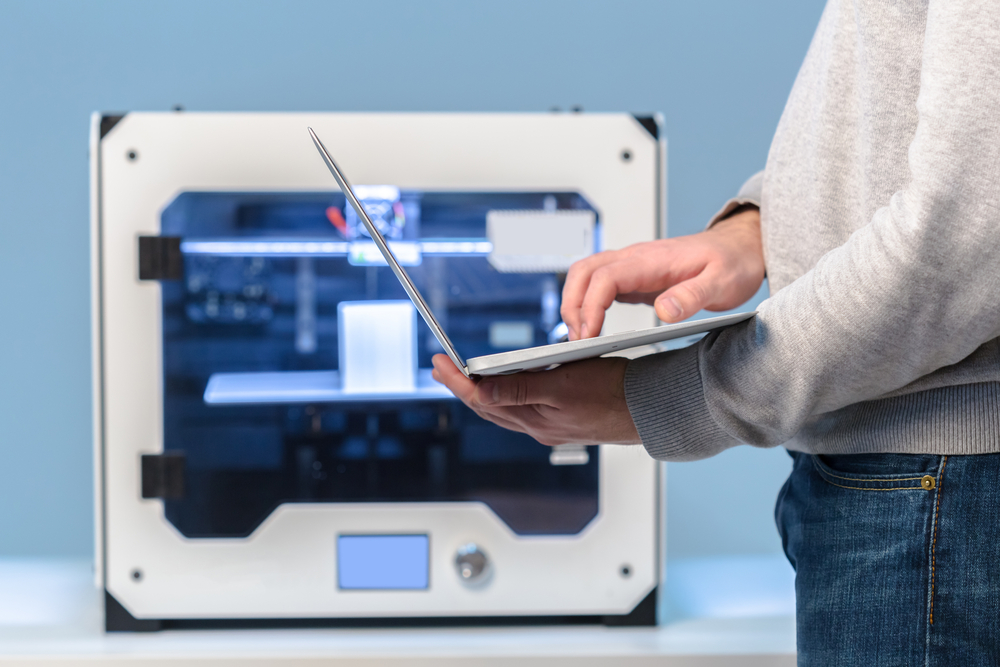
#3 Prototyping in Parallel
3D printing does not require tooling modifications between printing runs, so multiple prototypes can be planned and printed in batches. Each version of a prototype can have slight variations in function or aesthetics, so designers can simultaneously test and experiment with multiple prototypes. The ability to run various iterations in parallel increases the number of designs a company can evaluate. With greater testing of aesthetic and functional design variations, companies can increase their chances of delivering the best product to market while reducing the total time required to select the optimum design.
#4 Ease the Transition to High Volume
After finalizing a new design, a company may transition it to high-volume production. 3D printing aids the shift to full-scale production. Designers can use 3D printing to produce sample runs for assembly and field testing. They can determine how well the design fits with other parts in an assembly, get statistical quality and yield data, or experiment with various production-grade materials. Designers then make the final adjustments necessary to ease into full-scale production.
| Traditional Prototyping | Prototyping with 3D Printing | |
| Approach | Build a single or a minimal number of prototypes, and make modifications based on function, yield, quality, and ease of manufacturing. | Experiment with multiple prototypes in parallel. Prototypes can be fully functional, accelerating rapid prototyping cycles. |
| Designs | For high-volume, products require simple designs. | Supports a higher level of design complexity or greater design freedom. |
| Assembly | Challenging to reduce part count due to tooling constraints and processes with traditional manufacturing. | Products can be designed with fewer part counts, reducing assembly costs. |
| Scaling | Designers must adapt the finished prototype to the traditional process. | With cloud-connected 3D printers or developed at a smart factory, the finished prototype is immediately printable at volume. |
Transition to Full Scale with Cloud-Connected 3D Printers
When planning to use 3D printing for rapid prototyping through production, companies need to decide whether to bring 3D printers in-house or engage with a smart factory-enabled service bureau. Bringing 3D printing in-house gives designers more control over prototyping iterations.
A 3D printing solution has lower upfront costs than traditional production methods as there are no tooling or non-recurring engineering (NRE) costs when beginning production.
Smart factory-enabled service bureaus can provide companies with a broader range of services from innovation through production. With the introduction of advanced cloud-connected 3D printers, companies gain an on-demand option for production and scaling. Using cloud-connected 3D printers in a smart factory can de-risk go-to-market strategies by providing on-demand production capacity, lowering MOQ, and reducing inventory on hold. It allows companies to iterate prototypes locally rapidly and then connect to a smart factory for production when the design is approved.
LuxCreo’s patented LEAP™ (Light Enabled Additive Production) process is the ideal 3D printing process to help you scale. We provide cloud-connected 3D printers, high-performance materials, and on-demand Smart Factory production services in production and rapid prototyping applications. For more information on how our services can improve your supply chain and manufacturing processes, visit our contact page or call (650) 336-0888.
Subscribe to Our Newsletter
Be the first to get our latest updates and free trials!
Popular Resources
Follow Us
Featured Products

4D Aligner™
First Smart ActiveMemory™
Aligner
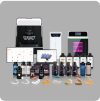
iLux Pro Dental Solution
Ultimate 1-Click Dental
Application Solution
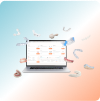
LuxCloud Dental
Your One-stop Digital Dentistry
Platform



